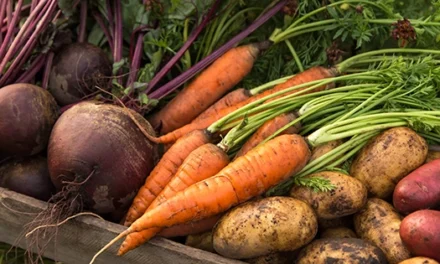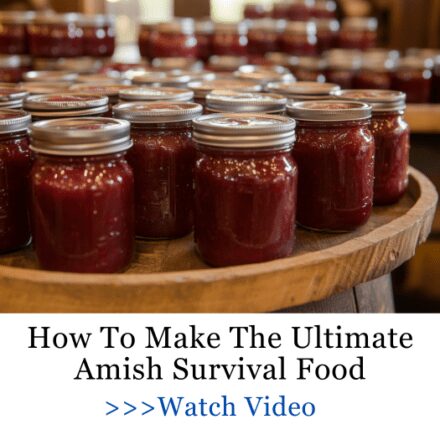As a homesteader who has lived off the grid for the past 10 years, I have learned how to make the most of the bounties of nature around us.
One of the skills I have honed is canning, which is a great way to preserve the harvest and ensure a year-round supply of food.
In this article, I will share with you eight spring wild edibles that can be safely canned, the ingredients you’ll need, the shelf-life of each recipe and the right way to store them.
Edible Wild Greens
Most people walk right past a salad bar growing wild in their own backyard and never even realize it. What some call “weeds,” I call dinner.
Once you know what to look for, nature suddenly turns into a free grocery store. Edible wild greens aren’t just nutritious. They’re resilient, abundant, and have kept people alive through wars, depressions and hard times.
Dandelion Greens
These are the leaves of the dandelion plant, which are often considered a weed. However, they are also incredibly nutritious and have a slightly bitter, earthy flavor that pairs well with other greens in salads or sautés.
Dandelion greens can be wilted with garlic and olive oil, or braised in a flavorful liquid like broth or wine. They can also be added to frittatas or quiches for a nutrient boost.

Ingredients of Canned Dandelion Greens:
- 4 cups dandelion greens
- 4 cloves garlic
- 1/4 cup vinegar
- 1/4 cup water
- 1 teaspoon salt
Directions:
- Wash and chop dandelion greens.

- Place garlic cloves in sterilized jars.
- Pack chopped dandelion greens into jars.
- In a saucepan, mix vinegar, water, and salt. Bring to a boil.
- Pour the hot mixture over the dandelion greens, filling the jars.
- Remove air bubbles, wipe jar rims, and seal with lids.
- Process in a pressure canner at 10 pounds of pressure for 70 minutes.
I got my inspiration for this recipe from a guide I read a while back called How to Make an Herbal Apothecary at Home. It gave me a list of hundreds of herbs and weeds like this one that I could simply pick up from my backyard or from around my homestead and that could be used to make a lot of different powerful remedies. What I liked most about it was that it also offered me detailed step-by-step instructions on how I could make the best out of these plants, and also how I could store them for years to come. This way, I always have my very own natural pharmacy at hand, and I won’t have to worry for quite a while that a crisis could ever catch me unprepared.
And the best part? I didn’t even have to pay a dime for it! I got it as a surprise bonus when I signed up for Nicole Apelian’s Wilderness Survival Academy. And the offer still stands, so if you hurry up, you can also get it, along with 3 other free bonuses! You can click the link here if you want to check it out.
Garlic Mustard Greens
Garlic Mustard Greens are a versatile and flavorful spring edible that can be used in many different ways in a homestead kitchen. They are also a nutritious addition to any meal, as they are high in vitamins A and C, as well as minerals like calcium, iron, and potassium.

Ingredients of Canned Garlic Mustard Greens:
- 4 cups garlic mustard greens
- 4 cloves garlic
- 1/4 cup vinegar
- 1/4 cup water
- 1 teaspoon salt
Directions:
- Wash and chop garlic mustard greens.

- Place garlic cloves in sterilized jars.
- Pack chopped garlic mustard greens into jars.
- In a saucepan, mix vinegar, water, and salt. Bring to a boil.
- Pour the hot mixture over the garlic mustard greens, filling the jars.
- Remove air bubbles, wipe jar rims, and seal with lids.
- Process in a pressure canner at 10 pounds of pressure for 70 minutes.
Fiddlehead Ferns
These are the young, coiled fronds of the ostrich fern that emerge in the early spring. They have a unique taste and texture that is often described as a cross between asparagus and green beans.
Fiddleheads can be lightly stir-fried or pan-fried and used as a side dish or added to pasta dishes. They can also be roasted or grilled for a smoky flavor.
Ingredients of Canned Fiddlehead Ferns: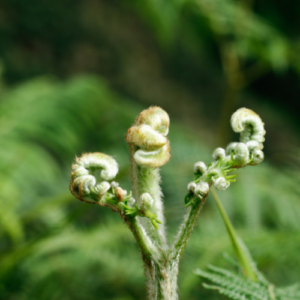
- 4 cups fiddlehead ferns
- 1/4 cup lemon juice
- 1/4 cup vinegar
- 1/2 cup water
- 1 teaspoon salt
Directions:
- Wash and trim fiddlehead ferns, removing brown husks and tough stem ends.

- Blanch fiddleheads in boiling water for 2 minutes, then transfer to an ice bath and drain well.
- Place the blanched fiddleheads in sterilized jars.
- In a saucepan, bring clean water (with optional canning salt) to a boil.
- Pour the hot water over the fiddleheads, leaving 1 inch of headspace.
- Remove air bubbles, wipe jar rims, and seal with lids.
- Process in a pressure canner at 10 pounds of pressure for 30 minutes (for pints).
Related: 9 Wild Edibles You Should Forage This Spring
Morel Mushrooms
These are a highly prized variety of wild mushrooms that grow in the spring. They have a distinctive honeycomb-like cap and a rich, earthy flavor that pairs well with cream and butter.

Morels can be pan-seared with butter and herbs, or roasted with garlic and olive oil. They can also be stuffed with cheese or breadcrumbs for a savory appetizer.
Ingredients of Canned Morel Mushrooms:
- 4 cups morel mushrooms
- 1/4 cup vinegar
- 1/4 cup water
- 1 teaspoon salt
Directions: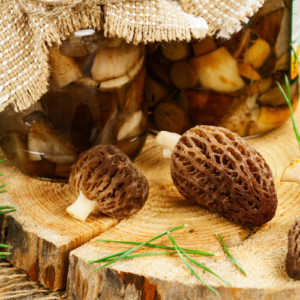
- Wash and trim morel mushrooms.
- Place them in sterilized jars.
- In a saucepan, mix vinegar, water, and salt. Bring to a boil.
- Pour the hot mixture over the morel mushrooms, filling the jars.
- Remove air bubbles, wipe jar rims, and seal with lids.
- Process in a pressure canner at 10 pounds of pressure for 90 minutes.
Morels are only one type of wild functional mushrooms that can do wonders for your body. Along with Reishi mushrooms, they are favorites along foragers for their specific taste and their sensational health benefits. In fact, they have been used for centuries in traditional medicine, especially the Reishi.
And the best part about them? You can turn them into almost everything, from coffees and teas, to tinctures, oilments and salves. Dr Nicole Apelian is one of their biggest fans, and she teaches you everything there is to know about them right here.
Nettles
Nettles are a stinging plant that can be found in the woods and fields in the spring. They have a slightly bitter, herbaceous flavor and are often used in soups, teas, and other herbal remedies.
Nettles can be blanched in boiling water to remove their sting, then chopped and added to soups, stews, and casseroles. They can also be steamed or braised and used as a side dish.
Ingredients of Canned Nettles: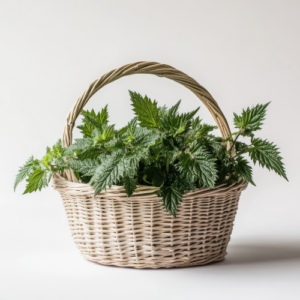
- 4 cups nettle leaves
- 1/4 cup lemon juice
- 1/4 cup vinegar
- 1/2 cup water
- 1 teaspoon salt
Directions:
- Wash and trim fresh nettle leaves carefully, using gloves to avoid stings.
 Blanch nettles in boiling water for 1–2 minutes to neutralize the sting, then transfer to an ice bath and drain well.
Blanch nettles in boiling water for 1–2 minutes to neutralize the sting, then transfer to an ice bath and drain well.- Place 4 cups of blanched nettle leaves into sterilized jars.
- In a saucepan, combine 1/4 cup lemon juice, 1/4 cup vinegar, 1/2 cup water, and 1 teaspoon salt. Bring the mixture to a boil.
- Pour the hot mixture over the nettles, leaving 1 inch of headspace.
- Remove air bubbles, wipe jar rims, and seal with lids.
- Process in a pressure canner at 10 pounds of pressure for 30 minutes (for pints).
Related: Weeds You Should Never Pull From Your Backyard
Ramp Bulbs
These are the bulbous root of the wild leek plant and have a strong, oniony flavor that is often pickled or used in savory dishes.
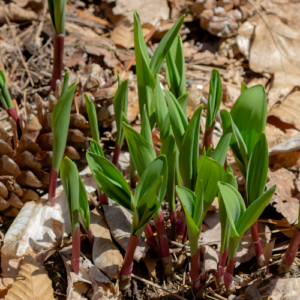
Ramp bulbs can be roasted or grilled for a smoky flavor, or pickled and used as a garnish. They can also be boiled and mashed like potatoes for a unique side dish.
Ingredients of Canned Ramp Bulbs:
-
- 4 cups ramp bulbs
- 1/4 cup vinegar
- 1/4 cup water
- 1 teaspoon salt
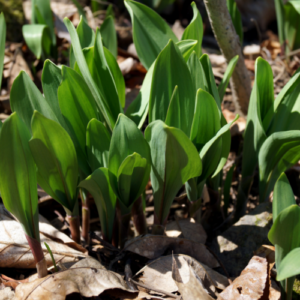
Directions:
- Wash and trim ramp bulbs.
- Place them in sterilized jars.
- In a saucepan, mix vinegar, water, and salt. Bring to a boil.
- Pour the hot mixture over the ramp bulbs, filling the jars.
- Remove air bubbles, wipe jar rims, and seal with lids.
- Process in a pressure canner at 10 pounds of pressure for 90 minutes.
Wild Asparagus
These are a wild variety of asparagus that grow along roadsides and in fields. They have a delicate, slightly sweet flavor that is best when lightly steamed or sautéed.
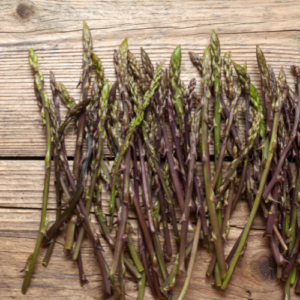
Wild asparagus can be roasted with olive oil and lemon zest, or blanched and served with a vinaigrette. They can also be wrapped in prosciutto or bacon and grilled for a decadent appetizer.
Ingredients of Canned Wild Asparagus:
- 4 cups wild asparagus
- 1/4 cup lemon juice
- 1/4 cup vinegar
- 1/2 cup water
- 1 teaspoon salt
Directions:
- Wash and trim wild asparagus.
- Place them in sterilized jars.
- In a saucepan, mix lemon juice, vinegar, water, and salt. Bring to a boil.
- Pour the hot mixture over the wild asparagus, filling the jars.
- Remove air bubbles, wipe jar rims, and seal with lids.
- Process in a pressure canner at 10 pounds of pressure for 90 minutes.
Wild Garlic
This is a wild variety of garlic that grows in the woods and fields in the spring.
Is wild garlic edible? Yes! It has a strong, pungent flavor that is similar to regular garlic and is often used in soups, sauces, and other savory dishes.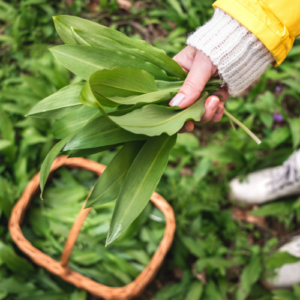
Wild garlic can be roasted with olive oil and served as a spread, or chopped and added to salads and pastas. It can also be used to flavor homemade butter or mayonnaise.
But before you harvest, be careful. Wild garlic has a few very dangerous lookalikes. If you’re not careful, you might mistake it for something far more dangerous, like Lily of the Valley, Autumn Crocus, or False Garlic—all of which are highly toxic and could cause serious harm. The difference can be subtle. Lily of the Valley, for example, lacks that unmistakable garlic scent and produces bell-shaped flowers, while the Autumn Crocus blooms only in fall, and is notoriously poisonous. False garlic might look similar but has no pungent garlic aroma and could leave you in serious trouble if consumed.
This is why correct identification matters more than ever. One wrong move, and it could be too late.
Here’s an amazing guide that can help you navigate this dangerous terrain, teaching you how to identify wild plants and their deadly lookalikes, with clear pictures and vital tips that could save your life. Don’t risk it – learn to tell the difference before it’s too late.
Ingredients of Canned Wild Garlic:
- 4 cups wild garlic
- 4 cloves garlic
- 1/4 cup vinegar
- 1/4 cup water
- 1 teaspoon salt
Directions:
- Wash and chop wild garlic.
- Place garlic cloves in sterilized jars.
- Pack chopped wild garlic into jars.
- In a saucepan, mix vinegar, water, and salt. Bring to a boil.
- Pour the hot mixture over the wild garlic, filling the jars.
- Remove air bubbles, wipe jar rims, and seal with lids.
- Process in a pressure canner at 10 pounds of pressure for 70 minutes.
Final Thoughts
Canning is a valuable skill for any homesteader, and it can help ensure a steady supply of food throughout the year.
By canning these eight spring wild edibles, you can take advantage of the natural bounty around you and enjoy them for months to come.
Remember to follow the directions carefully, use only sterilized jars and lids, and process the jars in a pressure canner at the appropriate temperature and time.
With proper storage, these canned goods can last for up to two years, giving you peace of mind and a delicious taste of spring even in the depths of winter.
Wild Edibles Native Americans Survived On During Fall
How to Collect Clean, Drinkable Water from Plants (Video)
The Forager’s Guide To Wild Foods: Book Review




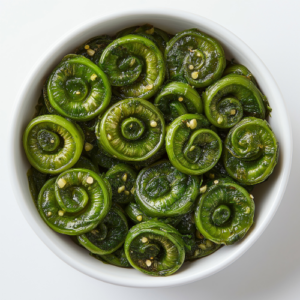
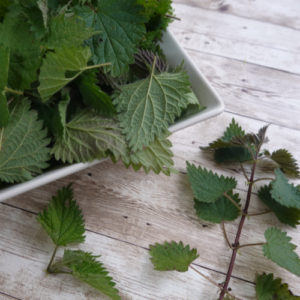 Blanch nettles in boiling water for 1–2 minutes to neutralize the sting, then transfer to an ice bath and drain well.
Blanch nettles in boiling water for 1–2 minutes to neutralize the sting, then transfer to an ice bath and drain well.

